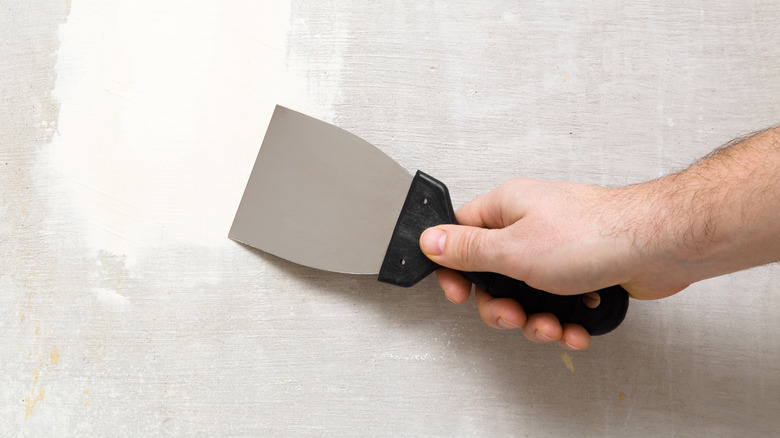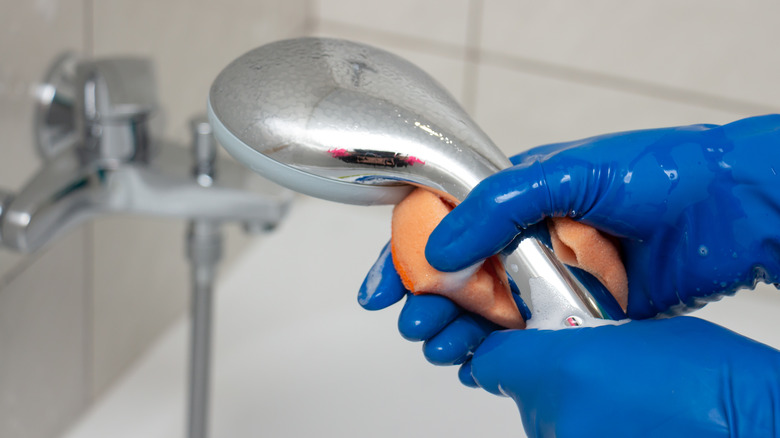How To Use A Putty Knife To Clean Up Soap Scum In Your Bathroom
Removing soap scum from your bathroom can be a tedious chore. Places you typically see the unappealing residue might be around various fixtures, the bathtub, shower, or on the surface of tiles and countertops. While removing unwanted film with a cloth or sponge can be done successfully, you might find a putty knife more resourceful. Normally used to apply and even out spackle, among other filler jobs, the handy tool can also scrape away undesirable substances or build-up.
Before scraping away at the bathtub, you might incorporate a cleaning solution to help prep the area for maintenance. Whether it's a homemade mixture like vinegar and baking soda, or your favorite store-bought brand, the right solution will help get rid of particularly thick excess. If you have unsightly layers of soap scum on your shower tiles or another bathroom surface, a putty knife can be a beneficial component when applied gently.
Spray on your favorite household cleaner
Also known as lime soap, soap scum is a combination of dirt, hard water mineral deposits, and (bar) soap, which often becomes tough to clean. While using a putty knife may assist in making the job smoother, there are a variety of cleaners and natural concoctions to help break up the residue before scraping. For a fluid performance, you might try a mixture of two parts vinegar and one part baking soda for most tile and porcelain surfaces. If you have a glass shower door, you can mix 1/2 cup of vinegar with a couple of tablespoons of dish liquid. Another great acidic blend to purify your surfaces is with a few tablespoons of lemon juice and a cup of water.
Additionally, if you prefer your favorite store brand cleanser over something organic, be knowledgeable of its ingredients. Many contain ammonia or bleach can negatively affect surfaces like granite, metal, and wood. Alternatively, you could experiment with products that are non-toxic or plant-based that can produce similar results.
Removing the residue
Once you have a method in mind, spray or apply your cleaner, then let leave it for several minutes until completely dry. A vinegar/baking soda solution can be left alone for up to 20 minutes before scraping off the residue. If areas of your bathroom are heavily caked in soap scum, slowly chip away at the sections, then rinse with warm water and apply the cleaning solution again. Shower grout may require a different type of scrubbing tool to get into those tight crevices, like a toothbrush.
To avoid the possibility of scuffs, utilizing a plastic scraper over a metal one is best. Compared to other scrubbing tools, you can use a 4-inch size putty knife to accurately get underneath those thick, stubborn layers of grime. Press down firmly and move the knife in a slow, upward motion while carefully pushing off the grime. You may want to refrain from a back-and-forth action to prevent scratching the surface.


